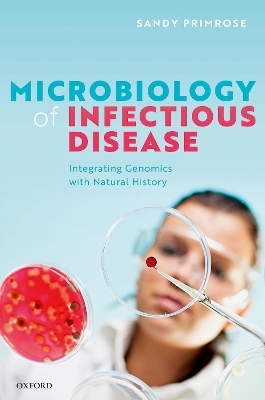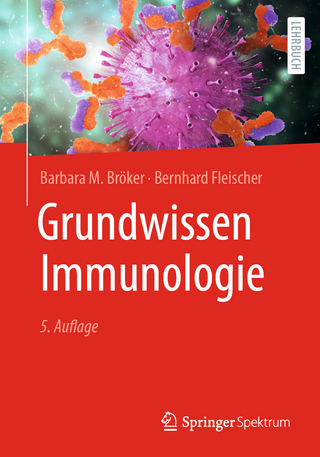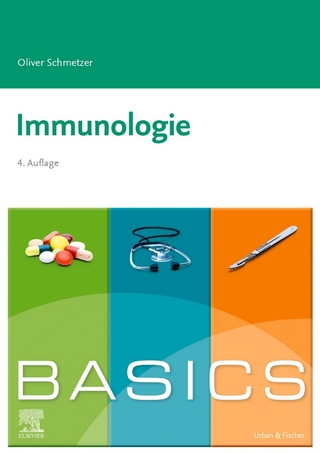
Microbiology of Infectious Disease
Oxford University Press (Verlag)
978-0-19-286384-3 (ISBN)
Prior to the advent of rapid DNA sequencing in the late 90s, students were taught in depth about the physiology and ecology of microorganisms. There was a generally good understanding about the biology of each organism and how it interacted with its environment. Since then, the focus of research has shifted towards an analysis of nucleic acid sequences to determine possible cellular biochemistry or phylogeny. A microbial genome can now be sequenced in a matter of hours, and with the help of a panoply of software programmes the inner workings of the organism can be probed in great detail. However, there is now so much detail that the student or researcher tends to lose any sense of the underlying biology of their study organism. Microbiology has almost become a branch of molecular biology, with the biology getting lost in the molecular detail.
This novel text reverses that trend by cutting through the molecular information overload and placing the new sequence-derived information in the context of the natural history of the organism in question. Each concise chapter has a fascinating and different story to tell, focussing on one pathogen or group of closely related pathogens and highlighting a particularly interesting and/or unusual feature. The aim is to abstract the relevant molecular and genomic information, and then to show how it provides insights into the biology of the organism as a whole.
Microbiology of Infectious Disease is aimed at undergraduates, graduates, and researchers in microbiology, microbial ecology, disease ecology, and related areas. It is intended as a supplemental text for students to provide them with a detailed overview of the biology and natural history of the microorganisms they will routinely encounter and the factors that influence their pathogenicity and infectivity.
Sandy Primrose, MBE is an established author with a number of very successful textbooks to his name which have run to multiple editions. He trained as a microbiologist and then undertook research in virology which led to his first textbook. This was followed a few years later by a major textbook on gene manipulation. After a relatively brief academic career, he transferred to the private sector where he has held a number of senior managerial positions in the pharmaceutical and biotechnology industries over a 40-year period. He has been an adviser to the Food Standards Agency and Defra, and has recently published his third popular science book. He is currently Chairman of both AMLo Biosciences and Newcells Biotech, as well as Non-executive Director of Attomarker and acting as a consultant to a number of venture capital companies. He also lectures widely on popular science topics to raise money for various charities.
Preface
Glossary
Part I: An Introduction to the Background Science
1: The role of nucleic acid analysis in understanding infectious diseases
2: Some common factors involved in host-pathogen relations
3: The Three Great Pandemics of Plague
Part II: Bacterial Pathogens
4: A Multifaceted Pathogen: Escherichia coli
5: Fever and Food Poisoning: The Two Faces of Salmonella
6: Understanding Pathogen Populations: Klebsiella pneumoniae
7: A Surprising Pathogen: Vibrio cholerae
8: The Accidental Pathogen: Legionella pneumophila
9: Two Related Pathogens, One Ancient and One New
10: Helicobacter pylori and Gastric Ulcers
11: A Tale of Two Pathogens: Pseudomonas aeruginosa and Pseudomonas syringae
12: The Enigmatic Pathogens: Syphilis, Yaws, Pinta, and Bejel
13: Mycobacterial Mysteries: Tuberculosis and Leprosy
14: Plasmids and Pathogenicity: The Bacillus cereus Complex
15: Tracking the Origins of Clostridium difficile Infections
16: Tracking Horizontal Gene Transfer: Staphylococcus aureus
17: The Inadvertent Pathogen: Borrelia burgdorferi and Lyme Disease
18: Phytoplasmas: Bacteria that Manipulate Plants and Insects
19: The Most Influential Bacterium: Wolbachia pipientis
Part III: Eukaryotic Pathogens
20: The Ubiquitous Pathogen: Trichomonas vaginalis
21: The Greatest Killer of All Times: The Malarial Parasite
22: An Environmental Opportunistic Pathogen: Cryptococcus
23: The Most Famous Plant Pathogen: Phytophthora infestans
Part IV
24: A Virus That Promotes Its Own Transfer: Tomato Spotted Wilt Virus
25: Morbilliviruses: Measles, Rinderpest and Canine Distemper
26: Filovirus Haemorrhagic Fevers: Marburg Virus and Ebola
27: The Origins of HIV and the AIDS Pandemic
28: The Benefits of a Segmented Genome: Influenza
29: Third Time Unlucky: SARS, MERS, and Covid-19
Part V: Some Unifying Themes
30: Zoonotic Diseases
31: Some Common Pathogenicity Themes
| Erscheinungsdatum | 25.03.2022 |
|---|---|
| Verlagsort | Oxford |
| Sprache | englisch |
| Maße | 160 x 240 mm |
| Gewicht | 590 g |
| Themenwelt | Studium ► Querschnittsbereiche ► Infektiologie / Immunologie |
| Naturwissenschaften ► Biologie ► Genetik / Molekularbiologie | |
| Naturwissenschaften ► Biologie ► Mikrobiologie / Immunologie | |
| ISBN-10 | 0-19-286384-3 / 0192863843 |
| ISBN-13 | 978-0-19-286384-3 / 9780192863843 |
| Zustand | Neuware |
| Haben Sie eine Frage zum Produkt? |
aus dem Bereich


